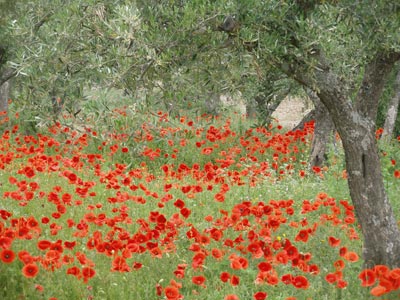Portugal occupies the western side of the Iberian Peninsula and is an Atlantic rather than a Mediterranean country. It has important fisheries and forests and is noted for the production of port wine which it exports along with sardines and cork from the cork oak. Most of the country enjoys a temperate climate with a moderately heavy rainfall. The Algarve in the extreme south has a sub-tropical climate with vegetation reminiscent of north Africa. Wheat, maize, beans vines and olives are grown in the valleys of the west of Portugal while the mountainous eastern part of the country produces more cork than anywhere else in the world. Resin from pines is also a significant export.
Its colonisation of the East Indies has shaped the cuisine of Portugal, with spices, in particular chillis, cumin and coriander (US: cilantro), being a regular addition to most dishes. The Moorish influence on the cuisine resulted in the use of almonds and figs in the cooking and they also introduced lemon and orange trees to the Algarve where they still flourish.
Most restaurants will display a menu and may have a dish of the day (prato do dia). Soup is a staple of the Portuguese meal with caldo verde, a cabbage soup from Minho with spiced sausage, being particularly well known. The thickened, starchy bread soups or açordas are another. Bacalhua, dried cod, is ubiquitous and is produced in a multitude of ways, some of which are really delicious. Fish is a huge component of the Portuguese cuisine, with many varieties of fish being used, Especially good is the caldeirada, in which several kinds of fish are stewed with onions, tomatoes, potatoes, spices and oil.
Grilled foods are popular, with grilled chicken (frango no churrasco) and sardines (sardinhas assadas) among the favourite. Pulses such as lentils and beans are used in soups and stews, especially the feijoada. Rice or potatoes accompany many dishes.
Everything I ever read about Portugese cuisine seems to include mention of the matança, though your chances, or appetite to see this event are in doubt. As with the Spanish and Italian matanza, the matança is a day on which the butchering of a pig takes place. The animal is promptly broken down into its parts, the blood used in making black pudding or blood sausage (morcela), and various parts of the animal not suitable for grilling or roasting made into spicy sausages such as chouriço (the Portuguese answer to chorizo) and linguiça. The head is used to make brawn cabeça. Nothing is wasted.
Portuguese cuisine is renowned for its sweets and pastries. Belem, famous for its tower and just to the west of, and a short tram ride from Lisbon, is also noted for the scrumptious, but spectacularly sweet, pastéis de Belem. Sintra provides its rival, queijada (de Sintra). For dessert, the two most commonly available puds are leite-crème, a sort of set egg custard, and arroz doce (rice pudding).
